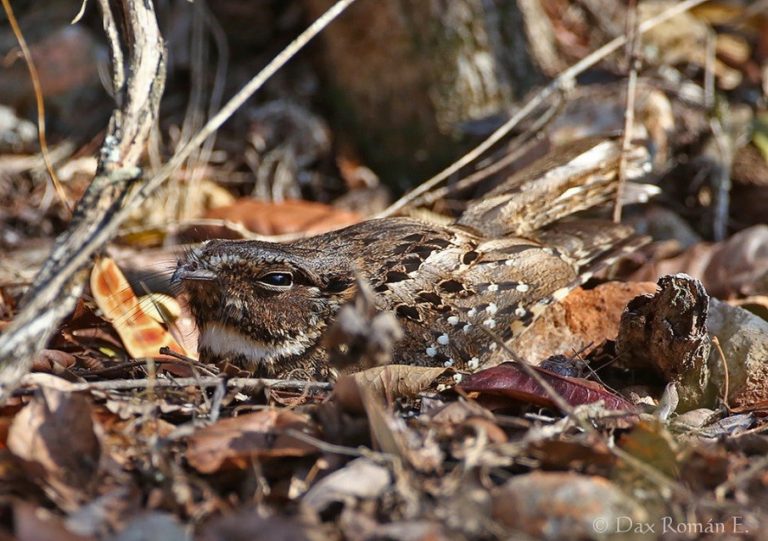Birdfinding.info ⇒ One of Hispaniola’s least-known endemics, found mainly in the southwestern D.R. Sites where it can reliably be heard—and, with effort and luck, seen—after dark include Zapotén Road below La Placa, the Rabo de Gato Trail (sometimes within the Villa Barrancolí compound), and side roads that lead up into the hills above Route 44 between Barahona and La Ciénaga. There have been recent reports from the northern coast in vicinity of Puerto Plata.
Least Pauraque
Siphonorhis brewsteri
Endemic to Hispaniola and Gonâve, where it occurs in semiarid scrub and dry deciduous woodland.
Numerous in the foothills of the Sierra de Bahoruco—the only population that is regularly reported. It seems likely that additional populations persist unreported elsewhere in suitable habitat.
Areas where it has been known to occur historically and may still occur include: Gonâve and the adjacent coast northwest of Port-au-Prince; the Monte Cristi area; foothills of the northern Cordillera Central (e.g., Río Limpio, La Leonor, and Jarabacoa); and foothills of the Sierra de Neiba (La Descubierta and Hondo Valle) and Sierra de Martín García (Galindo).
Identification
A thrush-sized nightjar with a pronounced white throat-strap. Much smaller than any other nightjar likely to be found in its limited range.
Both sexes have a narrow whitish terminal tail band that is diagnostic when present, but subtle and difficult to see.

Least Pauraque. (Puerto Escondido, Dominican Republic; May 11, 2009.) © Eladio M. Fernández

Least Pauraque. (Sierra de Bahoruco, Dominican Republic; May 11, 2009.) © José Yoel Hernández

Least Pauraque. (Puerto Escondido, Dominican Republic; April 11, 2014.) © Dax M. Román E.
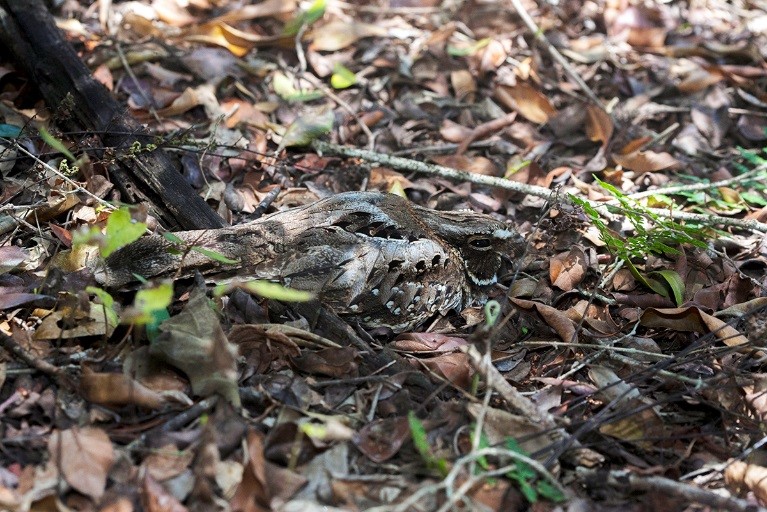
Least Pauraque. (Sierra de Bahoruco, Dominican Republic; May 9, 2011.) © Pedro Genaro Rodriguez

Least Pauraque, nestling. (Sierra de Bahoruco, Dominican Republic; May 19, 2011.) © Rafael V. Arvelo C.
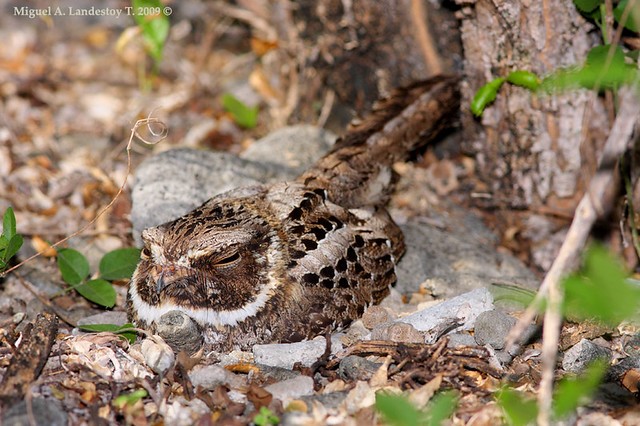
Least Pauraque. (Sierra de Bahoruco, Dominican Republic; May 3, 2009.) © Miguel A. Landestoy T.
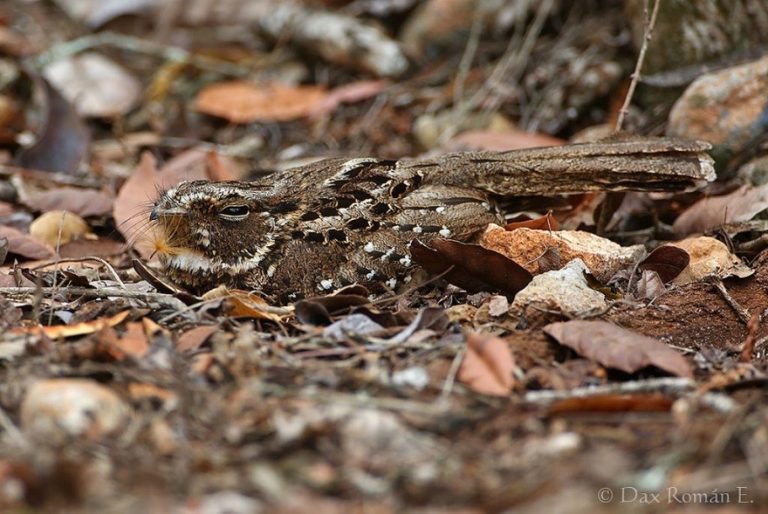
Least Pauraque—note the narrow whitish tips on the tail feathers. (Puerto Escondido, Dominican Republic; April 11, 2014.) © Dax M. Román E.
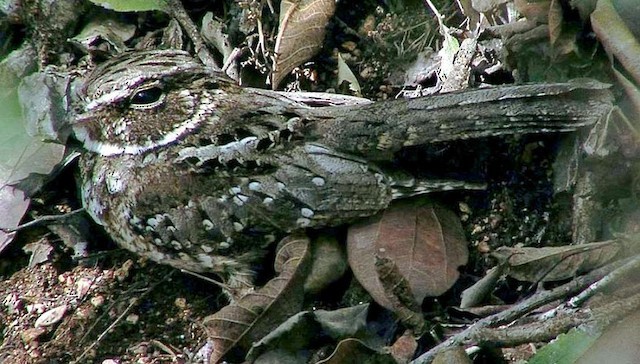
Least Pauraque. (Sierra de Bahoruco, Dominican Republic; May 11, 2009.) © Jürgen Hoppe
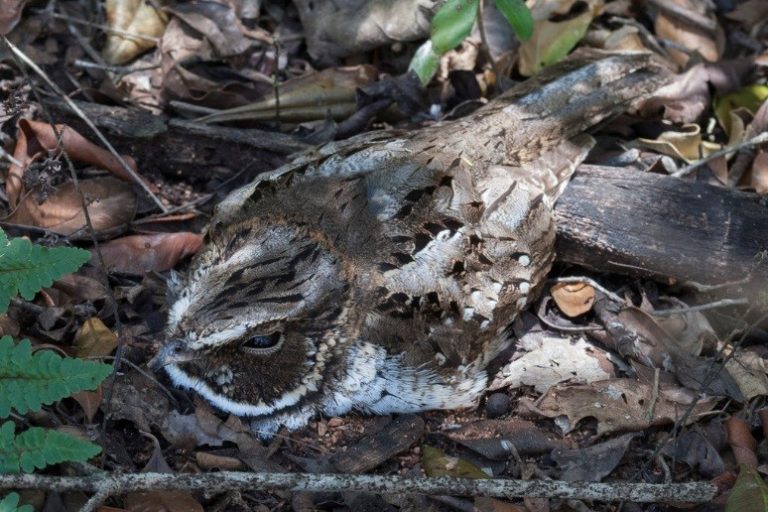
Least Pauraque, dorsal view. (Sierra de Bahoruco, Dominican Republic; May 9, 2009.) © Pedro Genaro Rodriguez

Least Pauraque. (Sierra de Bahoruco, Dominican Republic; May 16, 2014.) © Paul Noakes
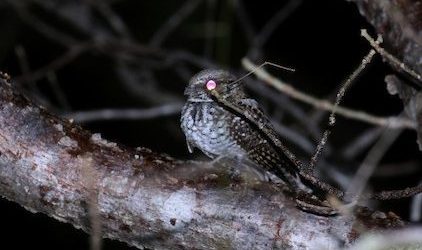
Least Pauraque. (Puerto Escondido, Dominican Republic; January 22, 2019.) © Jay McGowan
Notes
Monotypic species.
IUCN Red List Status: Near Threatened.
References
BirdLife International. 2016. Siphonorhis brewsteri. The IUCN Red List of Threatened Species 2016: e.T22689751A93246317. http://dx.doi.org/10.2305/IUCN.UK.2016-3.RLTS.T22689751A93246317.en. (Accessed September 12, 2017.)
Cleere, N., and D. Nurney. 1998. Nightjars: A Guide to Nightjars and Related Nightbirds. Pica Press, Sussex.
Cleere, N., and C.J. Sharpe. 2017. Least Poorwill (Siphonorhis brewsteri). In Handbook of the Birds of the World Alive (J. del Hoyo, A. Elliott, J. Sargatal, D.A. Christie, and E. de Juana, eds.). Lynx Edicions, Barcelona. https://www.hbw.com/node/55180. (Accessed November 28, 2017.)
eBird. 2019. eBird: An online database of bird distribution and abundance. Cornell Lab of Ornithology, Ithaca, N.Y. http://www.ebird.org. (Accessed June 15, 2019.)
Latta, S., C. Rimmer, A. Keith, J. Wiley, H. Raffaele, K. McFarland, and E. Fernandez. 2006. Birds of the Dominican Republic and Haiti. Princeton University Press, Princeton, N.J.
Raffaele, H., J. Wiley, O. Garrido, A. Keith, and J. Raffaele. 1998. A Guide to the Birds of the West Indies. Princeton University Press, Princeton, N.J.
